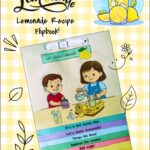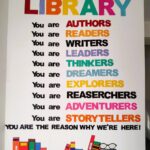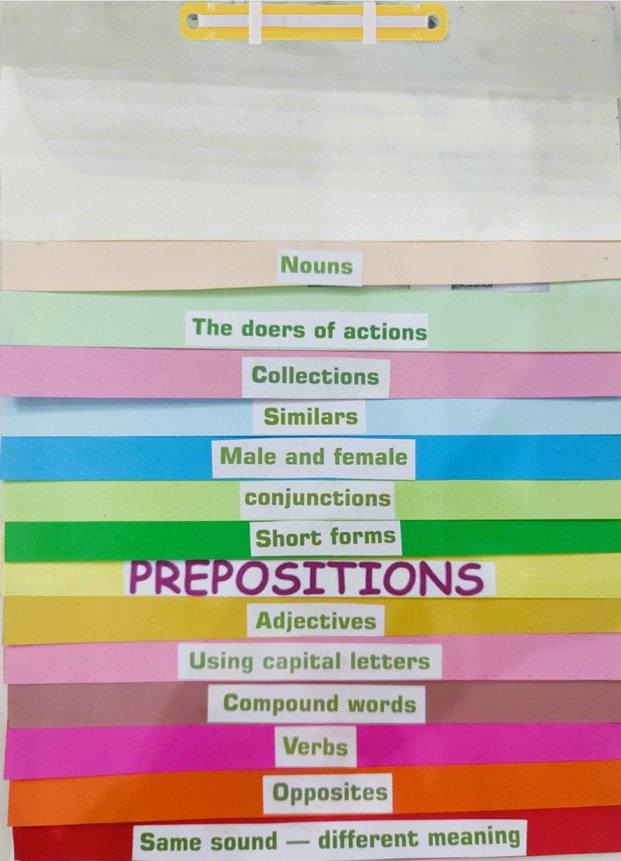
Introduction: Turning Grammar into a Hands-On Learning Adventure
Grammar can often seem dull or complicated to young learners, but with a little creativity, it can be turned into a fun and engaging experience. That’s what I set out to do when I created this DIY grammar flip book. Using grammar cuttings from old books, I have made a colorful and interactive tool that covers 14 basic grammar topics in a way that is easy for children to understand.
This flip book is not only an effective revision tool but also a visual and tactile learning aid that children love to flip through. Each page is dedicated to a specific topic, designed to provide bite-sized grammar knowledge at a glance.
Let me tell you about the preparation of the book, each grammar topic covered, and how you can use it effectively in your home or classroom.
How I Created the Grammar Flip Book
To make this flip book, I recycled pages and grammar pieces from old school textbooks. I cut and pasted relevant definitions, examples, and explanations onto brightly colored pages. Each page is slightly longer than the page above it, allowing all the topics to be seen at a glance. The result is a layered, rainbow-colored flipbook with tabs, making it easy for children to flip to the topic they need.
This hands-on creation not only sustainably reused old resources but also breathed life into grammar in a way that children found fun and interactive. It’s a low-cost, high-value addition to any teacher’s or parent’s toolkit.
Detailed Overview of the 14 Grammar Topics
Let’s explore each topic that this flip book includes:
1. Nouns
The first page introduces nouns – the basic building blocks of grammar. A noun is a naming word that refers to people, places, animals, or things. This section includes common examples such as:
- boy, girl, dog, cat.
- park, school, hospital
- book, apple, pencil
The activities on this page encourage students to find nouns in sentences and make lists of nouns around them.
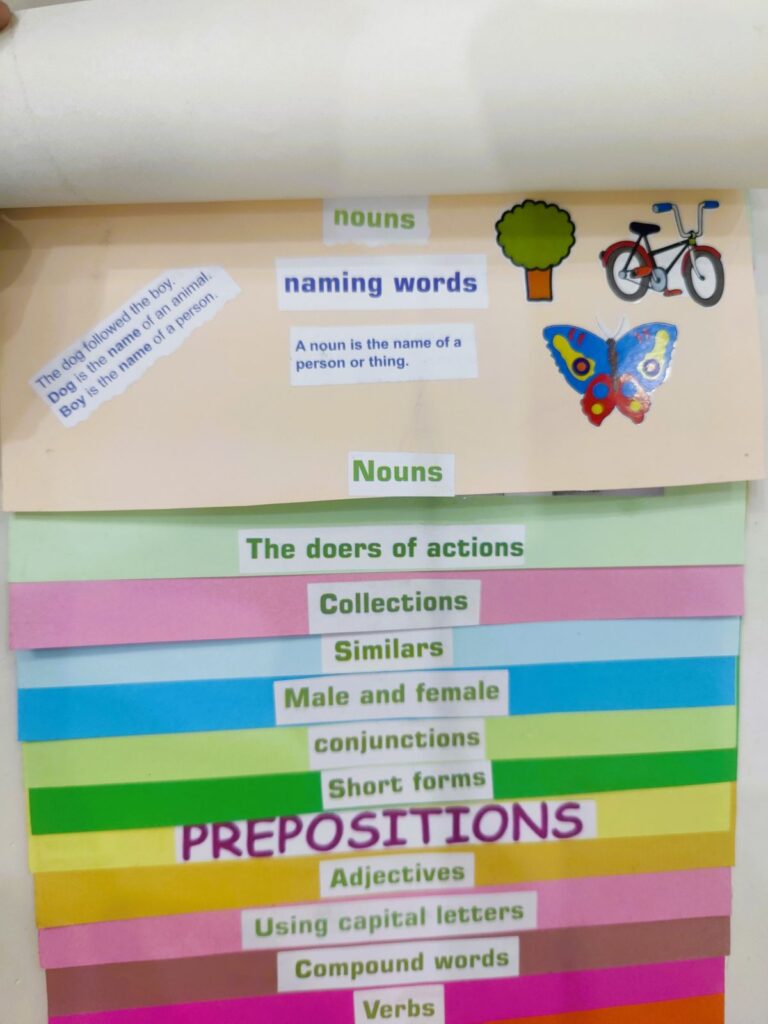
2. The Doers of Actions
This page teaches children about subjects or agents of actions in sentences—the people who do an action. In grammar, this article helps them understand verb agreement and sentence structure.
Example:
- Sarah runs fast. (Sarah is the doer)
This highlights the importance of identifying the doer before determining what they are doing.
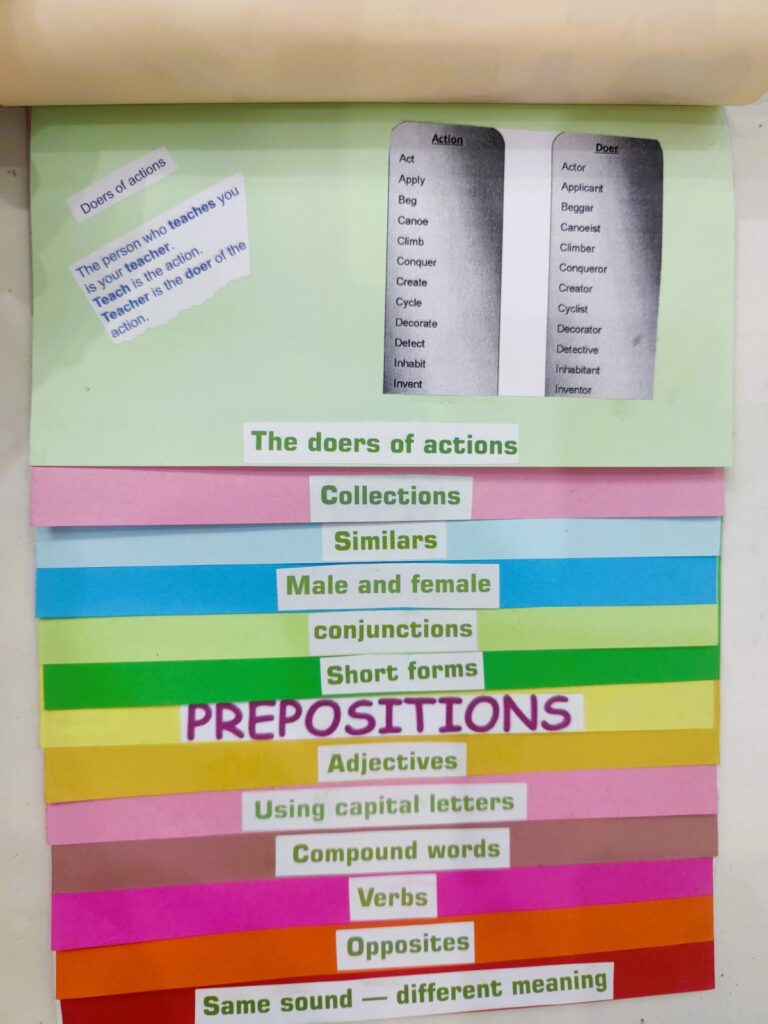
3. Collections
This colorful page introduces collective nouns, which refer to a group of people, animals, or things.
Examples:
- A flock of birds
- A team of players
- A bunch of grapes
Students are invited to match pictures with appropriate collective nouns.
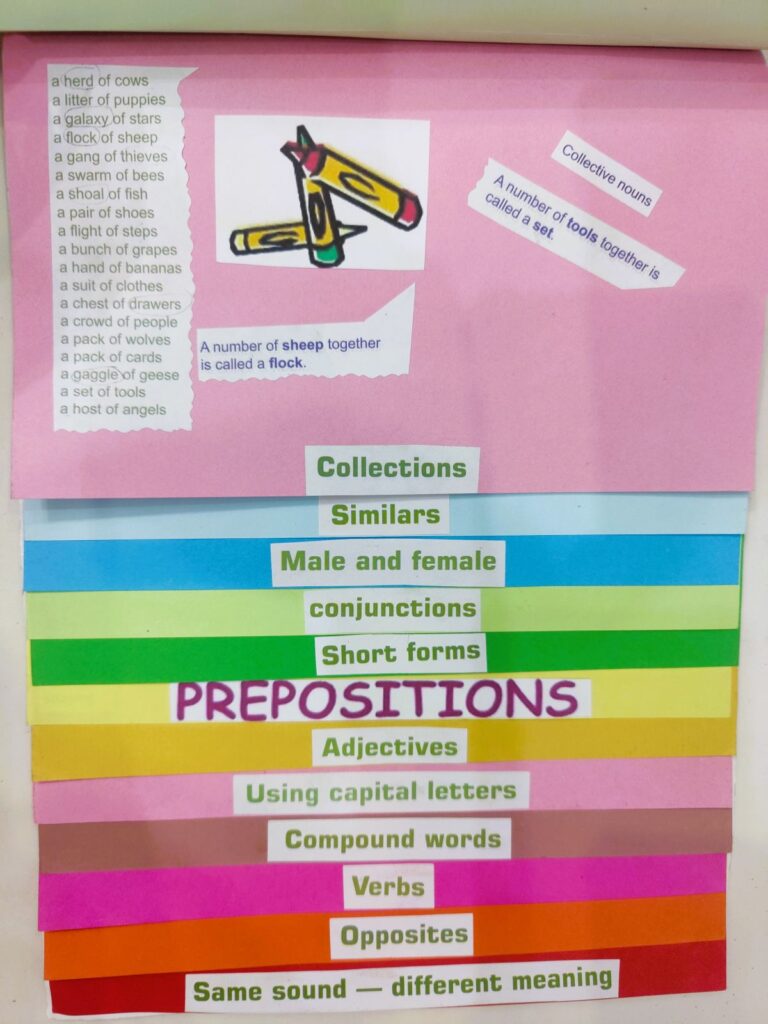
4. Similars
This section contains synonyms, or words that have similar meanings. It helps to improve vocabulary and writing.
Examples:
- big – huge
- small – tiny
- happy – glad
Children are encouraged to find alternative words in their reading or writing activities.
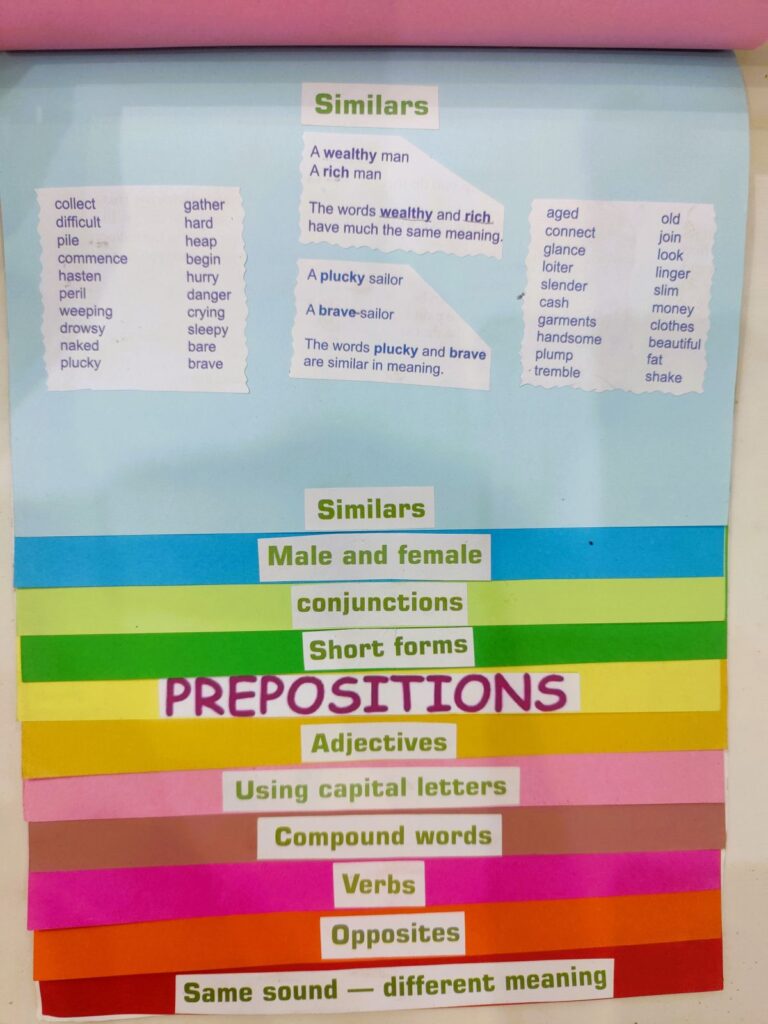
5. Male and Female
Understanding gendered nouns is the focus here. The page lists common male and female noun pairs:
Examples:
- King – Queen
- Actor – Actress
- Father – Mother
Students can play matching games or identify male and female roles in stories.
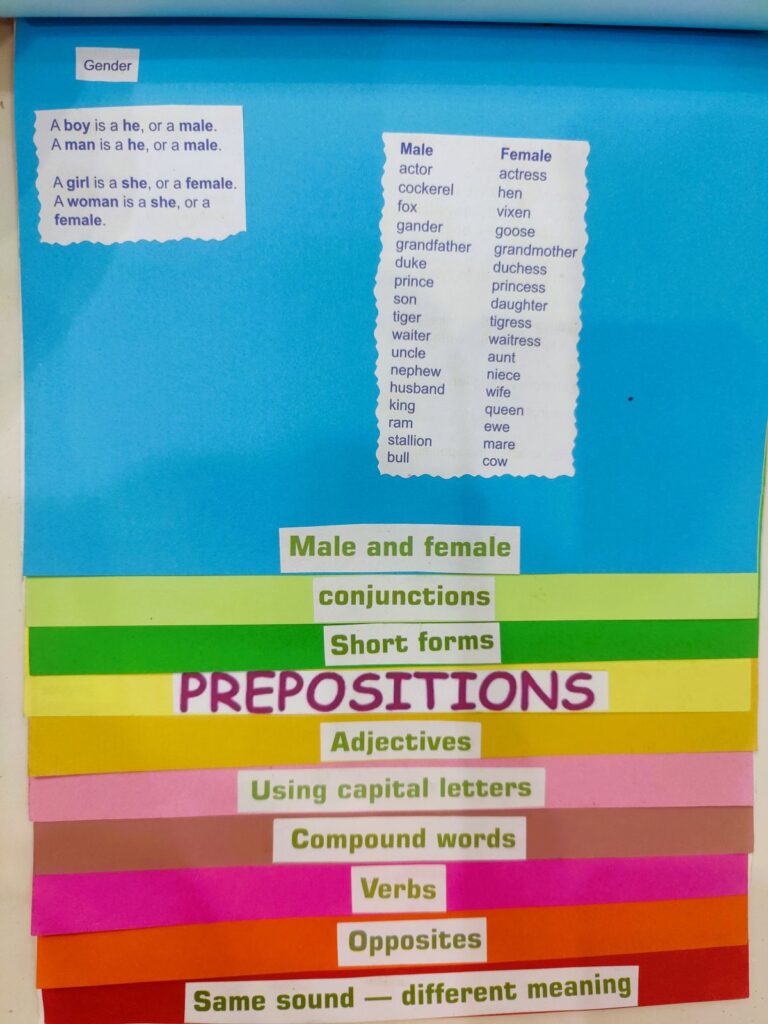
6. Conjunctions
This page explains conjunctions, the joining words that connect ideas within a sentence.
Examples:
- and, but, or, because, so
It provides examples like:
- I like pizza and burgers.
- I was tired so I went to bed early.
Conjunction practice helps students write more complex sentences.
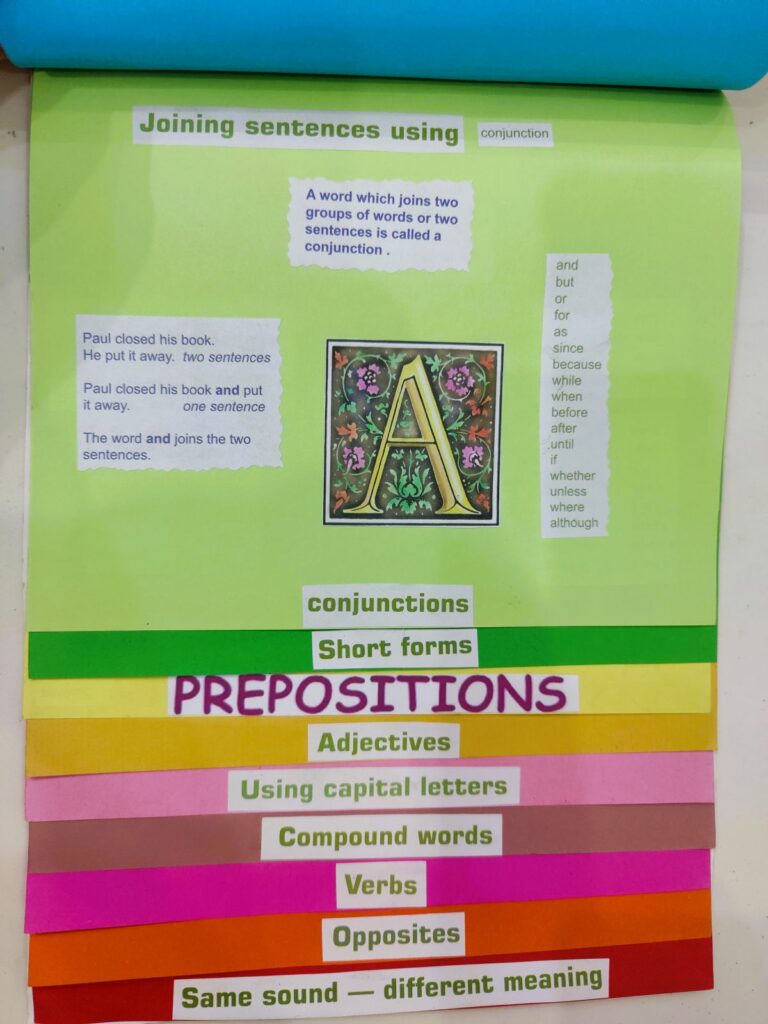
7. Short Forms
Here we introduce contractions, where two words are joined with an apostrophe.
Examples:
- I’m: I am
- Example: I’m happy. (I am happy.)
You’re: You are - Example: You’re welcome.
- He’s/She’s/It’s: He is/She is/It is
- Example: She’s a doctor. (She is a doctor.)
- We’re/They’re: We are/They are
- Example: We’re going to the park.
The flipbook includes full and contracted forms, as well as versions, to reinforce the concept.
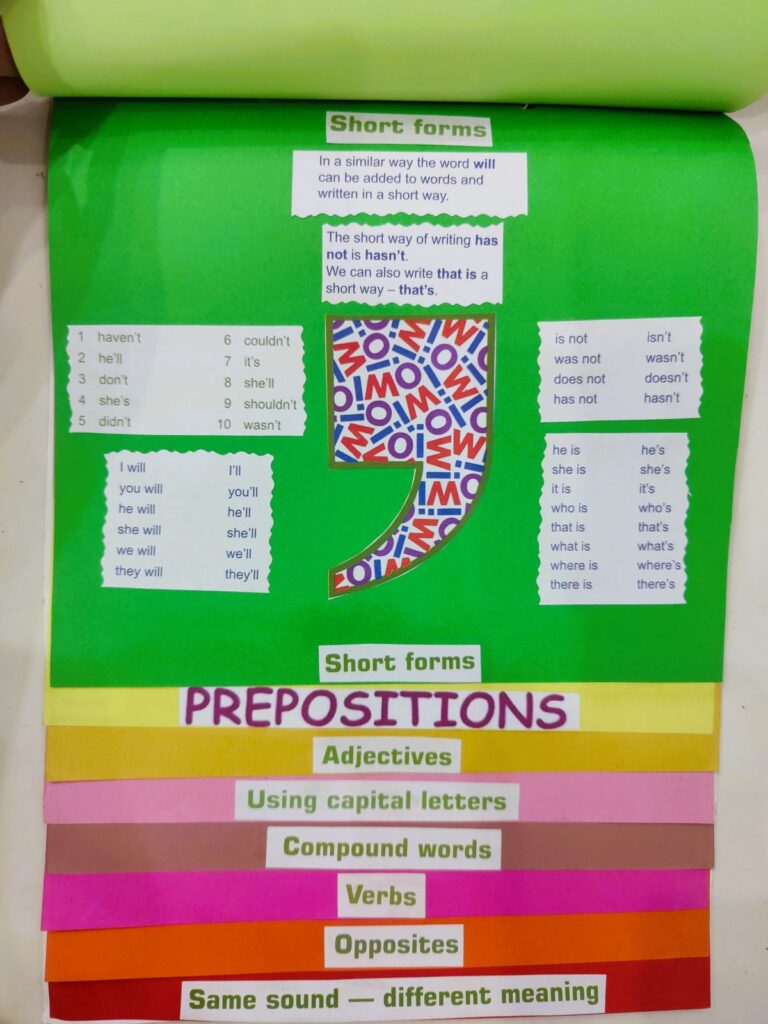
8. Prepositions
Prepositions show the relationship between two things, usually in terms of place or time.
Examples:
- on, under, above, near, in
- before, after, during
Students can look at pictures and use similes to describe locations: The cat is under the table.
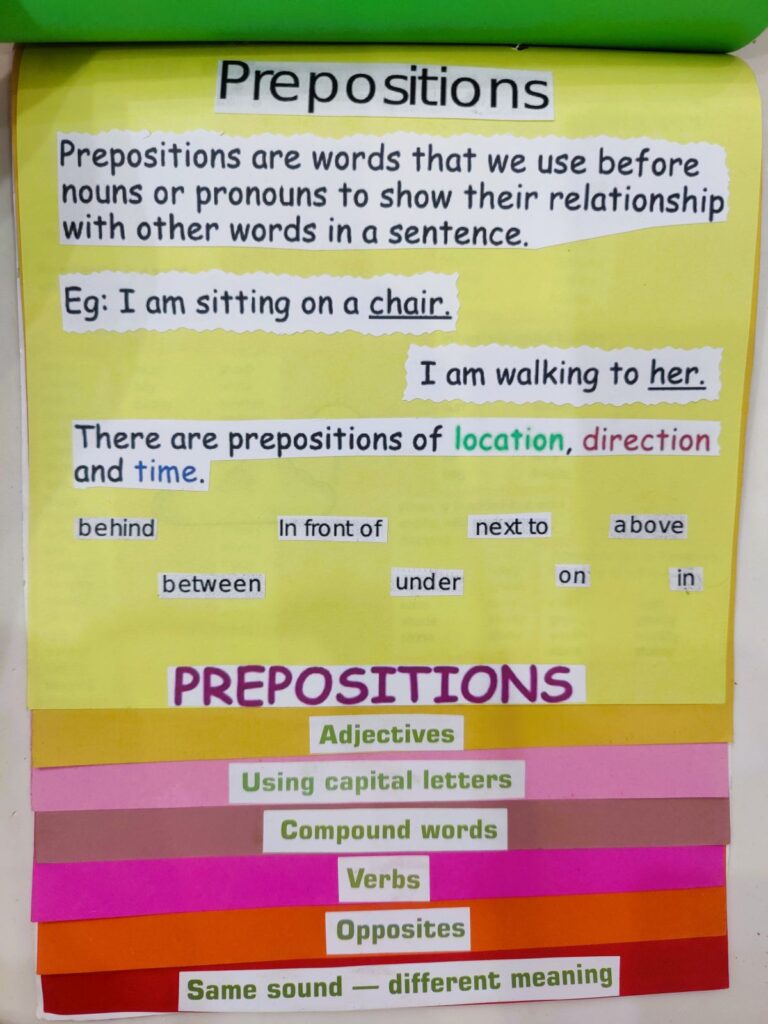
9. Adjectives
Adjectives describe nouns. This page is full of colorful, descriptive words:
Examples:
- Tall, short, red, cold, fast
Children can be asked to describe the picture using as many adjectives as possible.
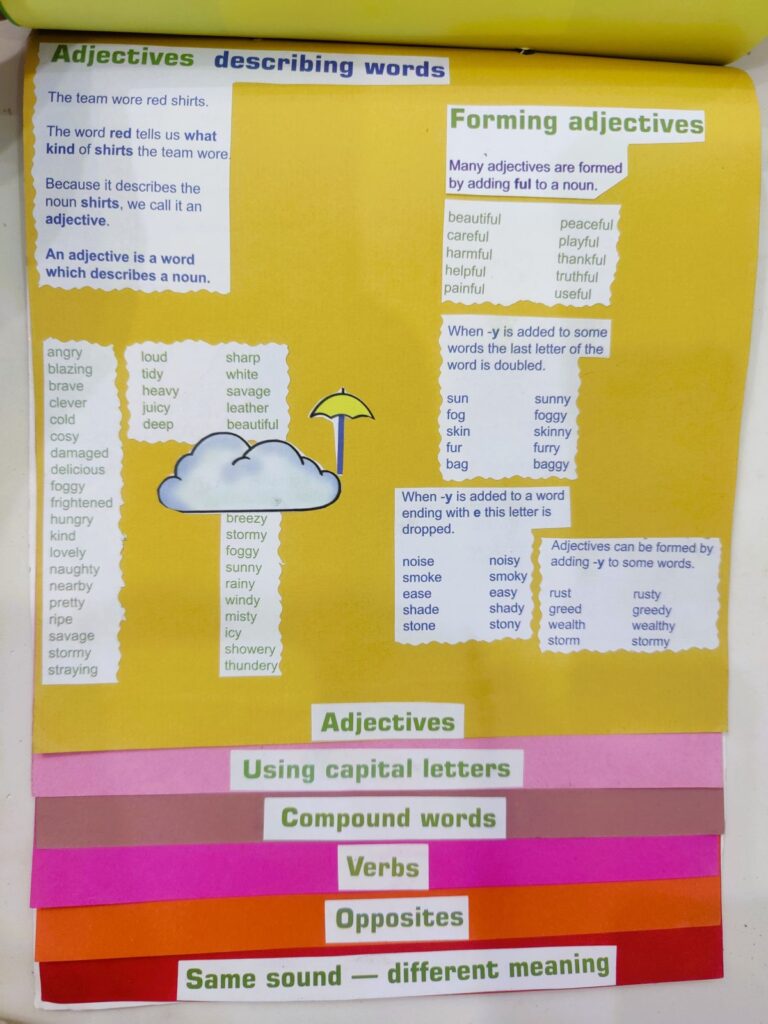
10. Using Capital Letters
This section teaches the basic rules for capitalization:
- First word of a sentence
- Names of people and places
- Days of the week and months
Examples:
- Ali lives in Lahore.
- Sunday is my favorite day.
Capitalization activities include correcting sentences with missing capital letters.
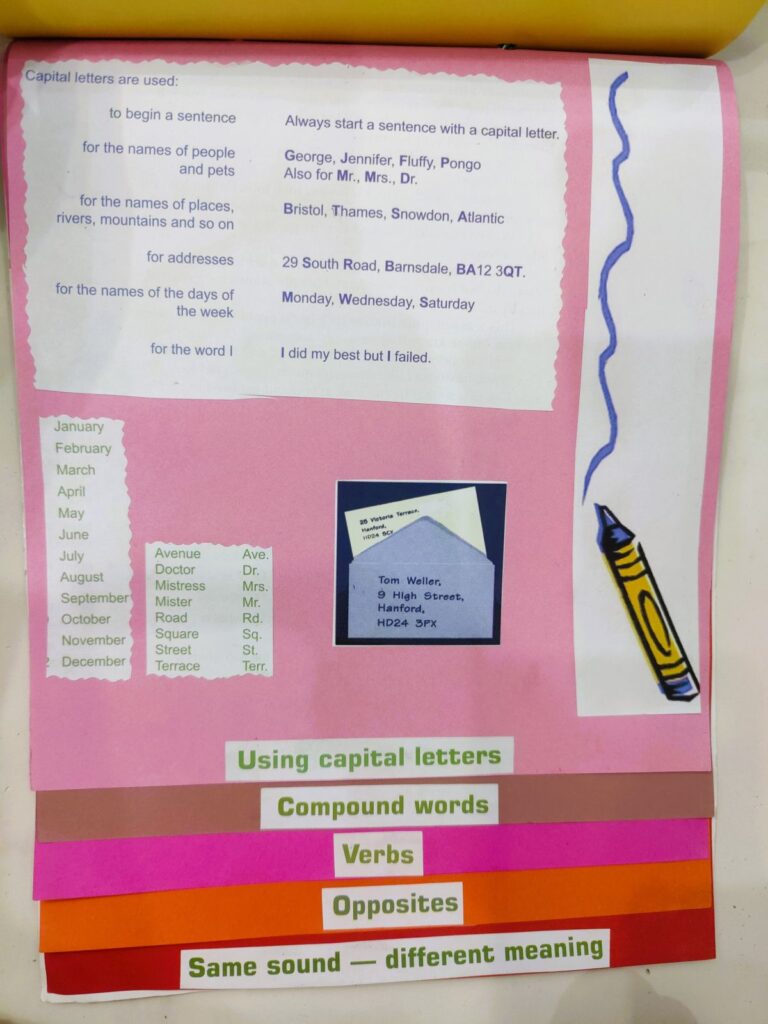
11. Compound Words
Compound words are made by combining two smaller words to form a new one.
Examples:
- Sun + flower = sunflower
- Rain + coat = raincoat
- Tooth + brush = toothbrush
Students love decoding these combinations and even creating their own.
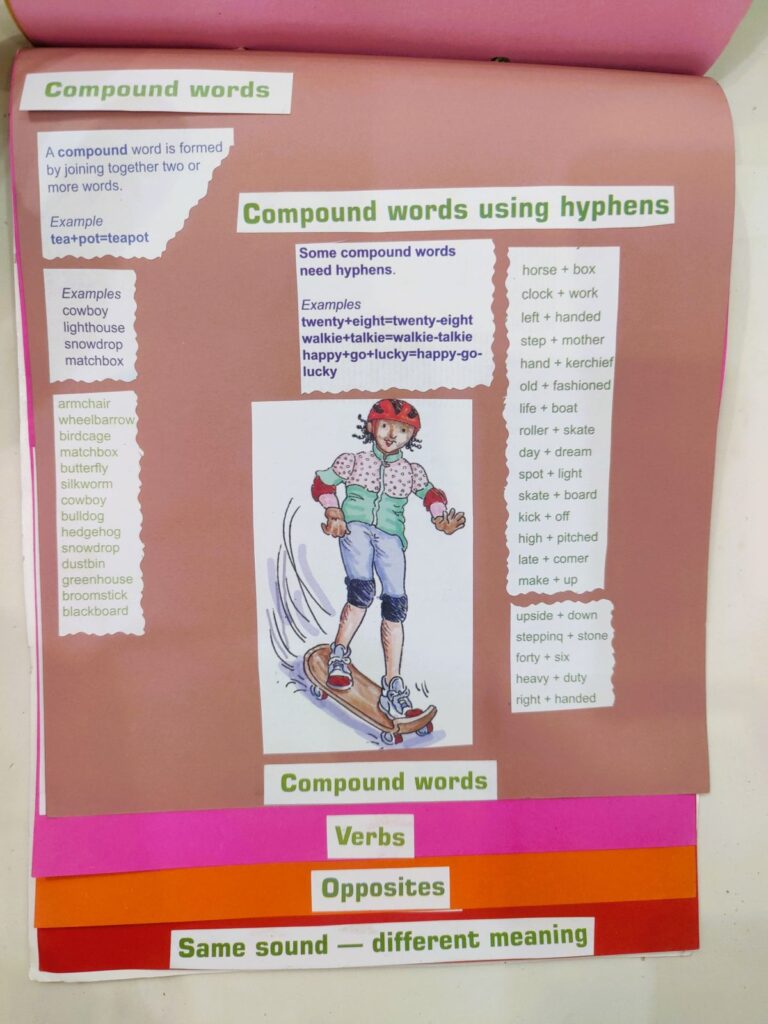
12. Verbs
Verbs are action words. This page teaches children to identify what the subject is doing.
Examples:
- Run, jump, write, eat, sleep
Phrases like the dog barks help reinforce the idea of action.
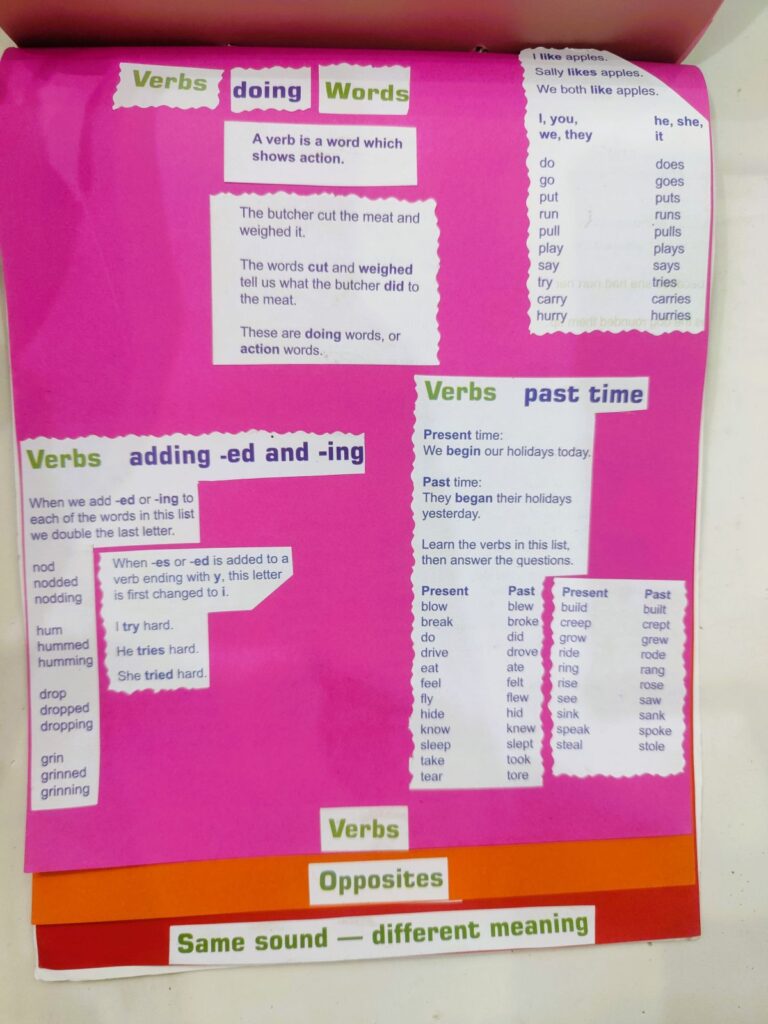
13. Opposites
This page teaches antonyms, which are words with opposite meanings.
Examples:
- Hot – Cold
- Big – Small
- Fast – Slow
Fun worksheets can include matching opposites or filling in blanks.
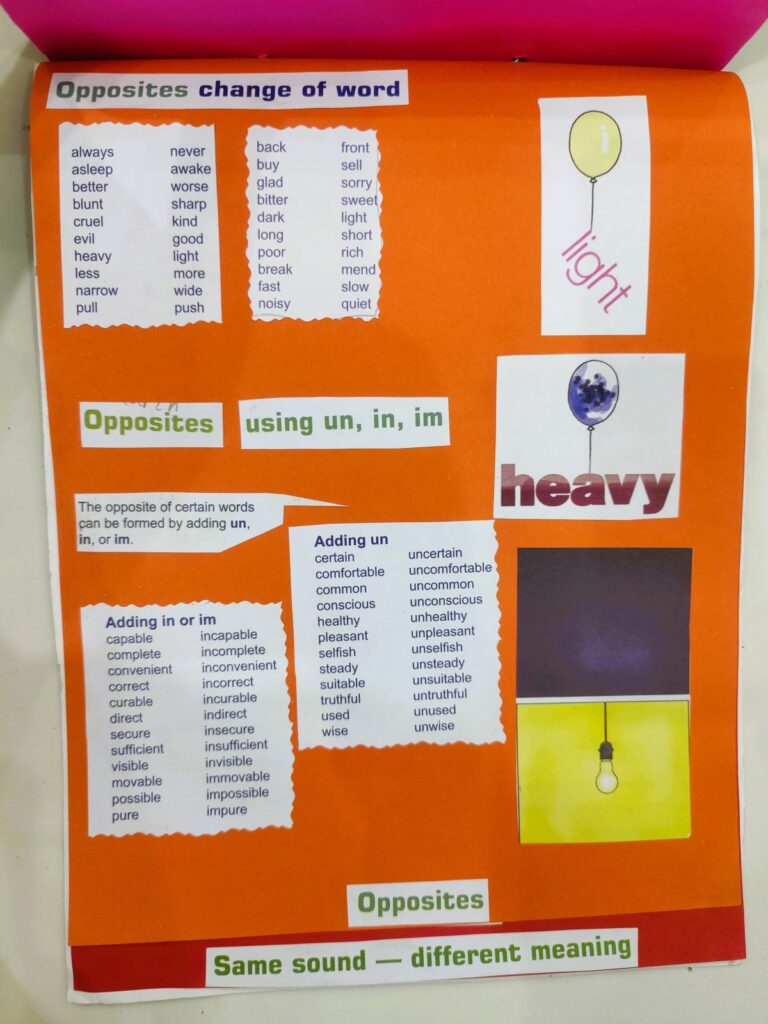
14. Same Sound — Different Meaning
This last page introduces homophones – words that sound the same but have different meanings and spellings.
Examples:
- See – sea
- main – mane
- Write – right
This helps students recognize the differences in context and spelling.
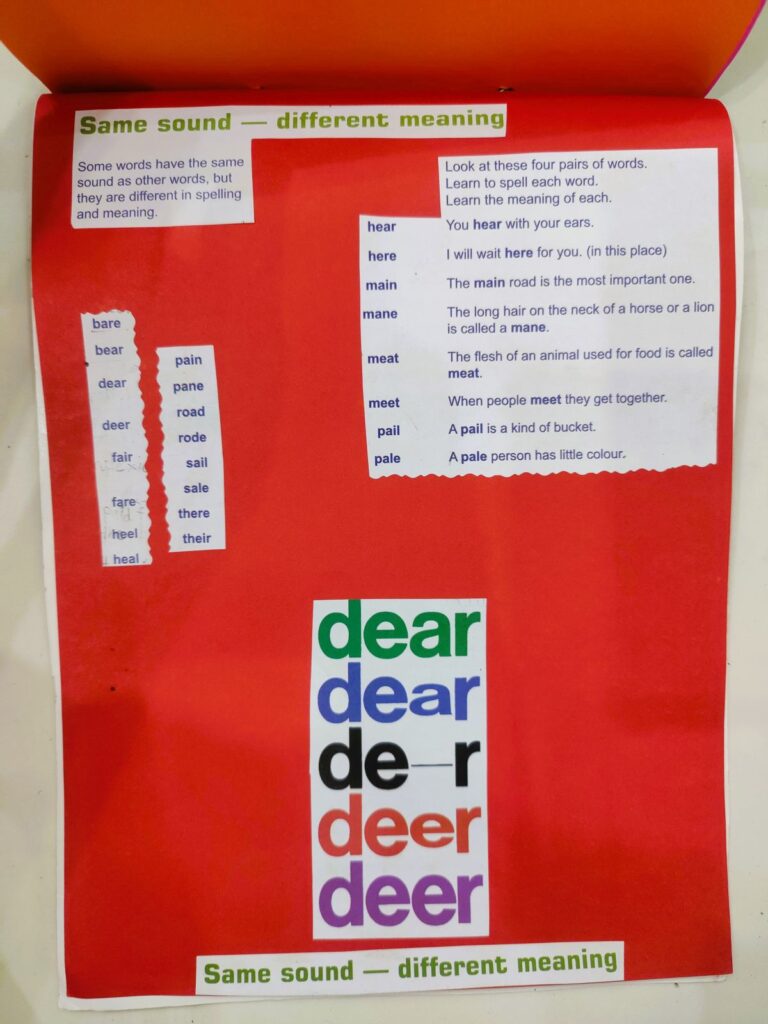
Why This Grammar Flip Book Works:
- Visual Appeal: Bright colors make it attractive.
- Tactile Learning: Layered tabs make it easy to use.
- Repetition and Reinforcement: Every time a student revisits a topic, it reinforces their learning.
- Resourceful: Made from old book materials, it is an eco-friendly classroom tool.
Creative Uses in Classrooms or Homeschool
- Morning Warm-Up: Use one page each day to review grammar concepts.
- Homework Helper: Kids can use this to look up quick grammar rules while doing writing tasks.
- Group Activities: Each student can be assigned a page and taught in class.
- DIY Project: Have students create their grammar flip books!
See My Work in Action
Take a closer look at my grammar flipbook and its colorful pages by exploring the video and images below:
- 14 Grammar Topics in a Fun Flip Book Format
- Colorful Tabs for Easy Navigation
- Recycled Book Cuttings Turned into Learning Tools
This hands-on flip book brings grammar to life through vibrant colors, clear explanations, and an engaging layout. With each page covering a key grammar concept, the flip book makes learning interactive and memorable for young students.
Stay tuned for more educational DIYs!
Final Thoughts: Grammar Flip Book Can Be Fun!
This flipbook is a small but powerful tool that can transform the way children understand grammar. From a daunting subject to an exciting adventure of words, meanings, and expressions—it all starts with how we present it.
Whether you’re a teacher, parent, or homeschooler, I highly recommend trying this creative method. Grammar isn’t just rules—it’s the language of thought. Let’s make it colorful!

